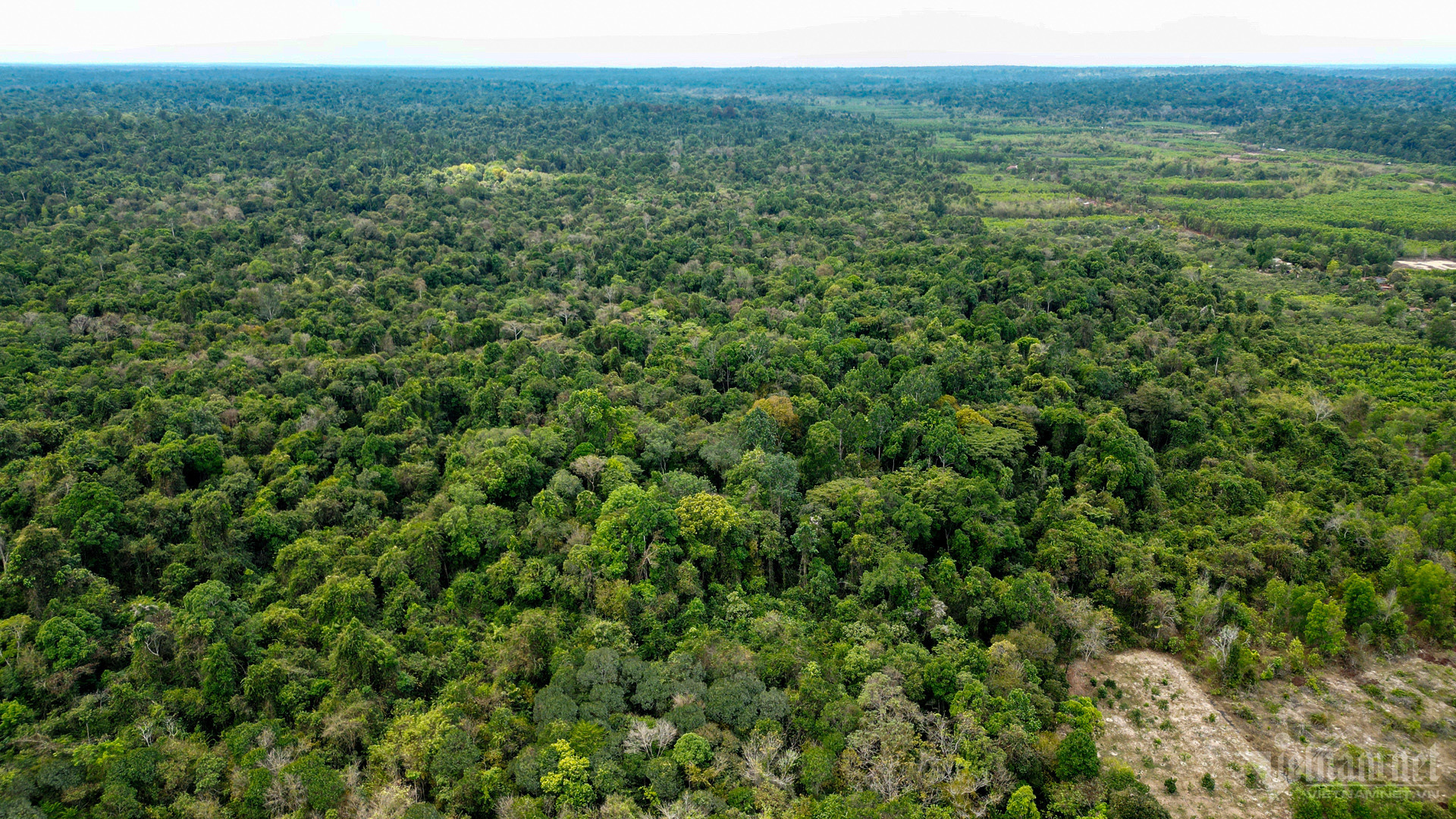
Developing a green economy and achieving sustainable production is a growing trend in Vietnam, which targets a net zero emission goal by 2050. Carbon credits have become a hot keyword in Vietnam.
In late 2023, MARD submitted to the Prime Minister a report on transferring 10.3 million tons of CO2 in the northern part of the central region to the World Bank at the unit price of $5 per ton of carbon. This was the first year that Vietnam could earn money from forest carbon credit sales.
Tran Quang Bao, director of the General Department of Forestry, explains below why Vietnam’s carbon credit sells at just $5 per credit.
Could you please tell us about carbon credit and about how one carbon credit is calculated?
Under the Law on Environmental Protection, a carbon credit is a certificate which can be put into commercial transactions. It shows the right to emit one ton of carbon dioxide (CO2) or one ton of equivalent CO2.
In the forestry sector, carbon credit is the certification of the results of greenhouse gas emission reduction and absorption increase created by mitigating emissions, and eliminating and absorbing carbon.
The creation of carbon credits must comply with specific carbon standards as per the requirement of the carbon market, and it is independently examined and certified by a third party.
To define forest carbon credits, it is necessary to define the volume of emissions/removals during a certain reference period; the volume of emissions/removals during the implementation phases; the referred and implemented emissions/removals, the volume of emission reduction and additional absorption after deducting emissions/removals provisioned against calculation uncertainty, risks, and emission inversions.
How would you assess Vietnam’s potential in forest carbon credits?
The total forest area in Vietnam is 14.86 million hectares, including 10.13 million hectares of natural forests and 4.73 million hectares of planted forests.
Of these, the forest area that can meet the requirements to calculate the coverage rate is 13.93 million hectares, while the forest coverage nationwide is 42.02 percent.
The Department of Forestry is conducting research on the potential in forest carbon credits in order to find the orientation for Vietnam to join the forest carbon market.
As far as I know, European countries can sell forest carbon credits at $120-150 per credit. Could you tell us why are Vietnamese credits cheaper than other countries?
There are three forms in the world’s carbon market, including carbon credit within UNFCCC (the United Nations Framework Convention on Climate Change); the international voluntary carbon market; and the domestic carbon markets.
Of these, the carbon credit market is established within UNFCCC is established for member countries to trade and exchange credits of carbon with each other.
The international voluntary market targets the demand for voluntarily trading carbon credits to implement enterprises’ social responsibility, as well as to create more credit supply sources for domestic carbon markets.
The voluntary market is based on bilateral and multilateral contracts and cooperation agreements among organizations, companies or nations. So, the carbon credit prices in the market are determined based on supply and demand situations.
At present, the carbon prices in the voluntary market are $2-4 per ton of CO2. The average carbon prices of the programs or projects in Asia were $1.8 per ton of CO2 in 2019, $1.6 in 2020 and $3.09 in 2021.
If you look at carbon prices on carboncredits.com, the carbon price of natural ecosystem on March 22, 2024 was $1.07 per ton of CO2.
Domestic carbon markets are set up by countries or territories. They operate with an aim to implement their commitments on national emission reductions.
Organizations and enterprises are assigned emission quotas and if their emissions exceed the allowed levels, they have to either pay taxes, or buy quotas and carbon credits.
The EU’s carbon market is the first carbon market in the world which became operational in 2005. The largest carbon market accounts for 45 percent of total emissions of the entire Europe and three-quarter of the global market. Credit carbons of non-EU countries are not traded there.
Vietnam’s carbon credits can only be traded on the voluntary market.
Tam An